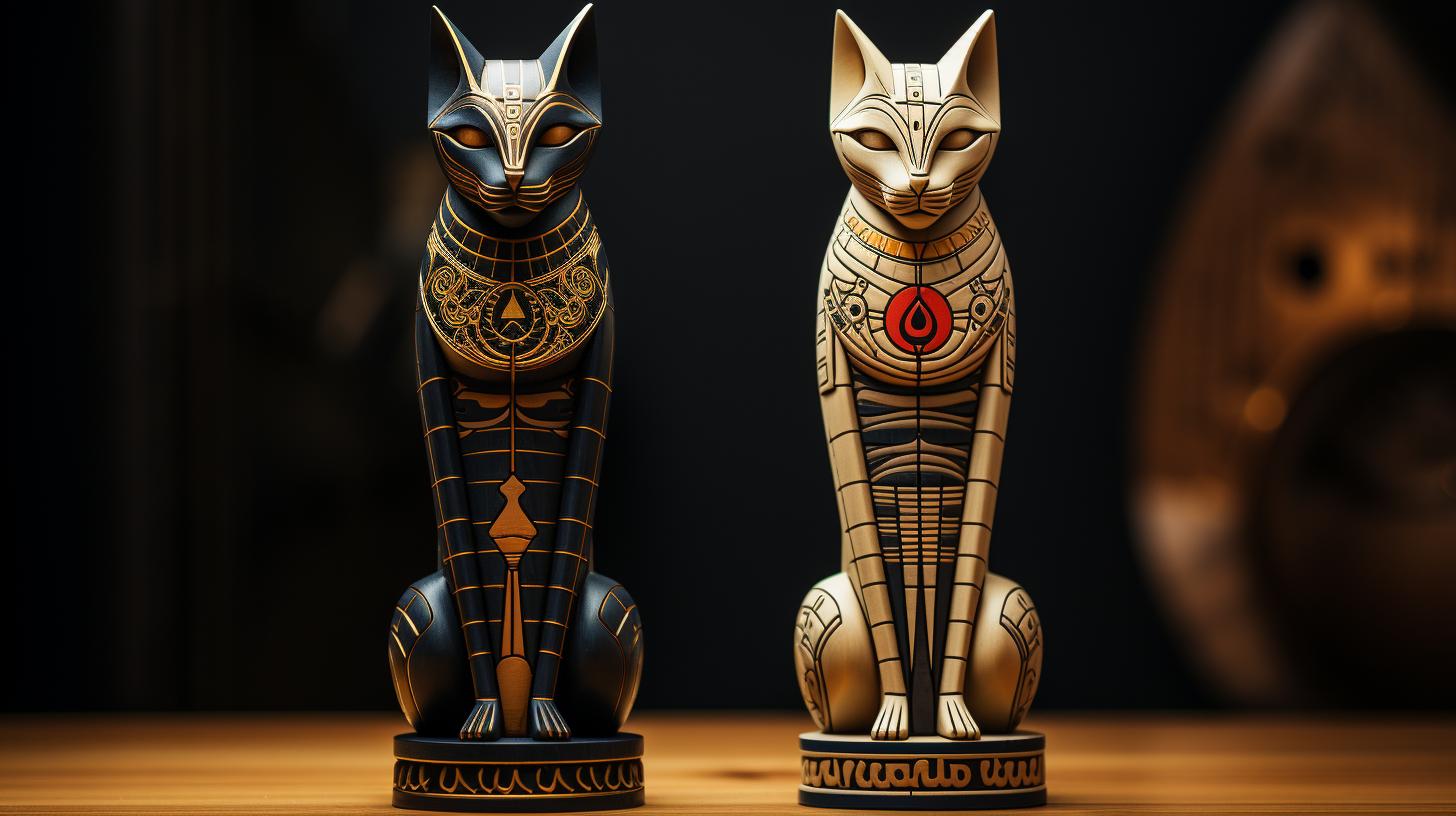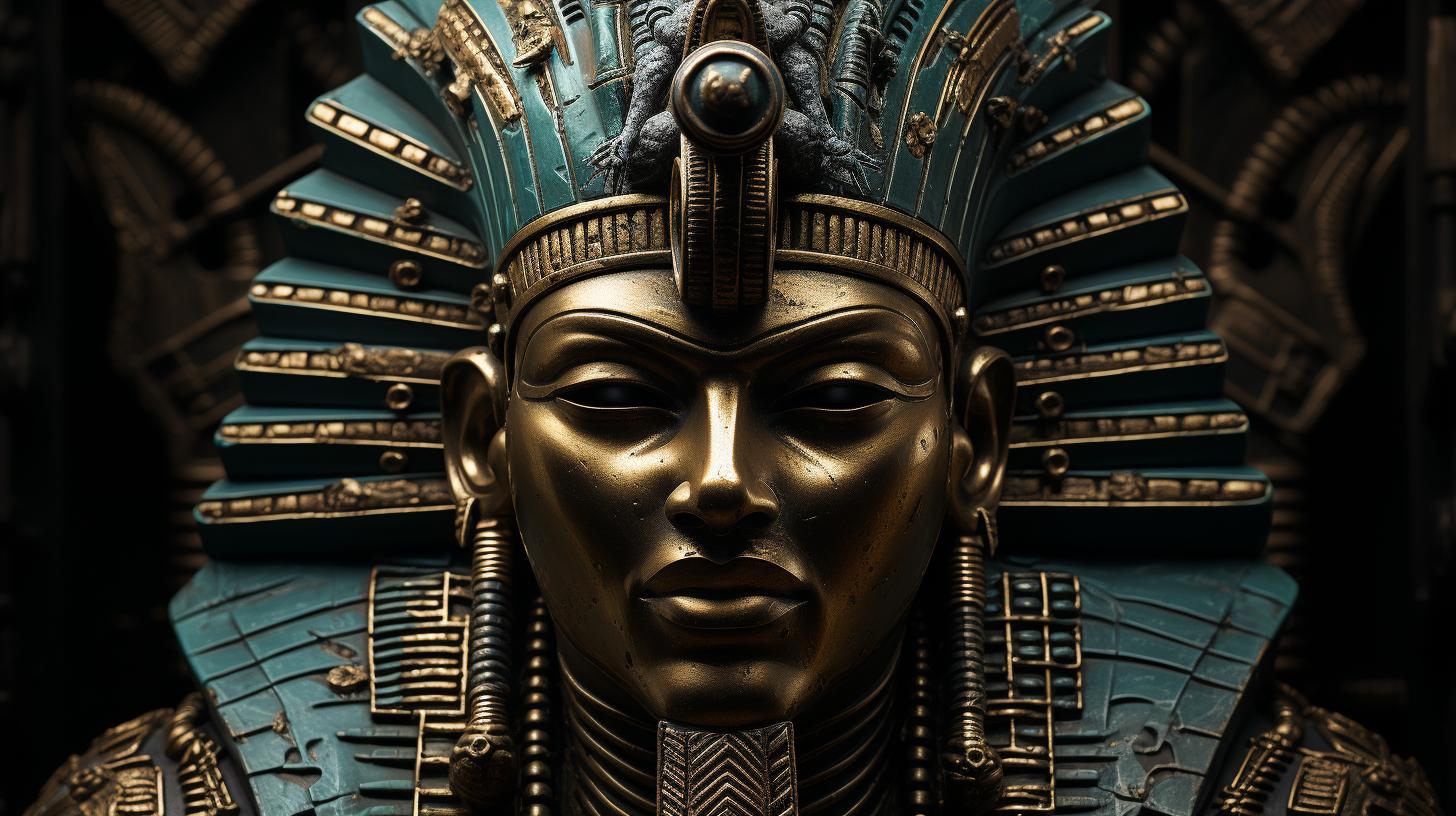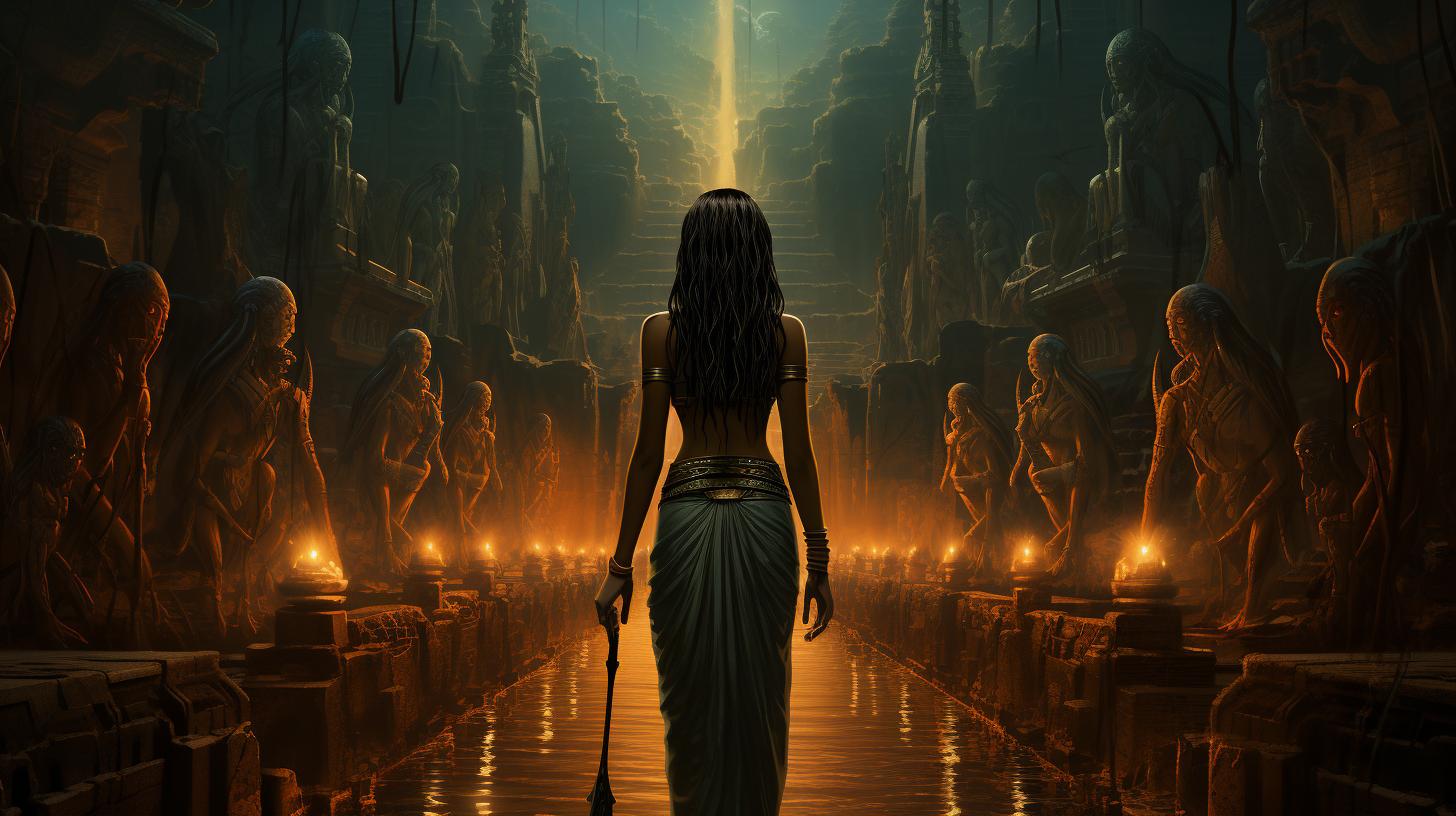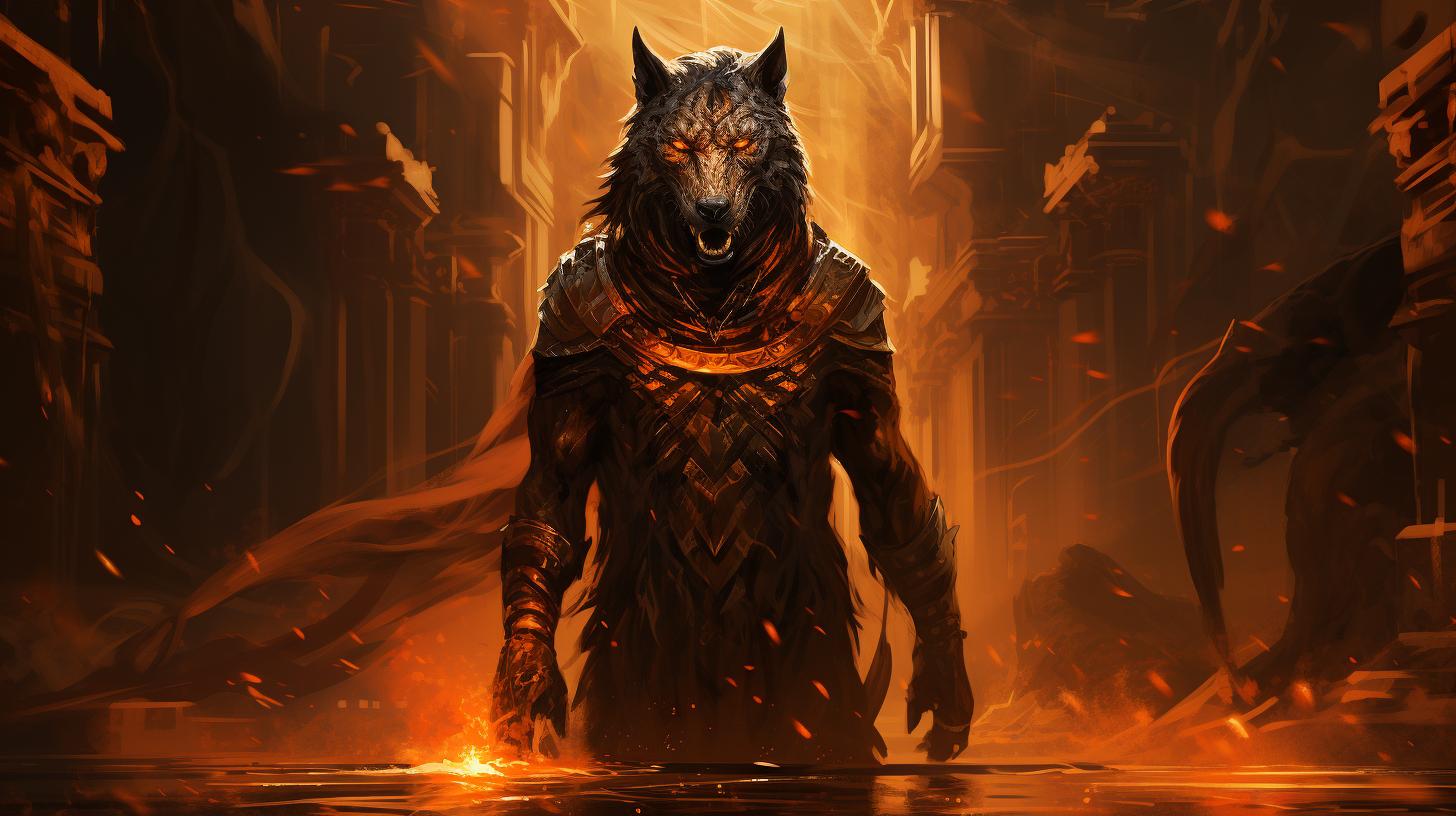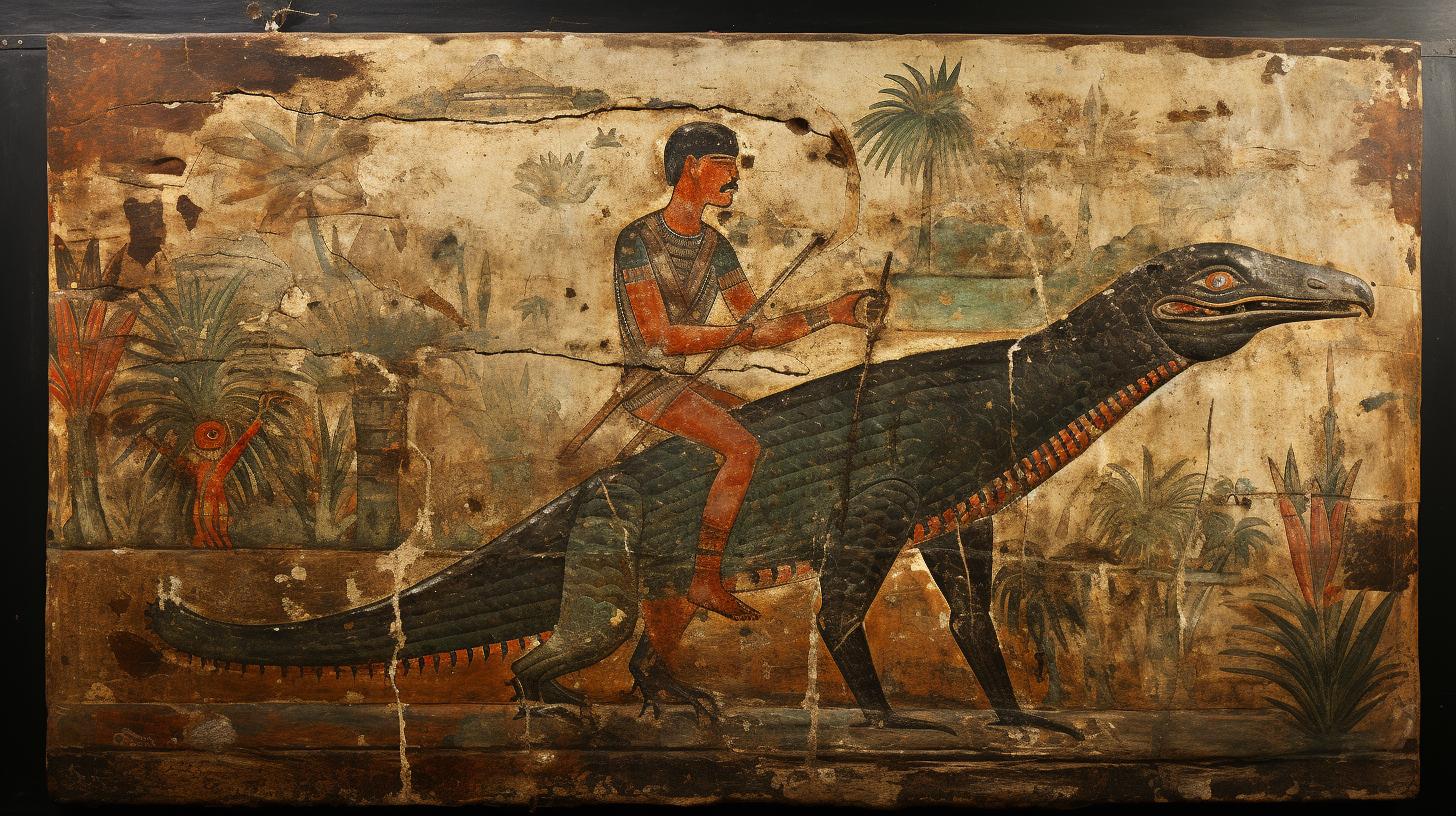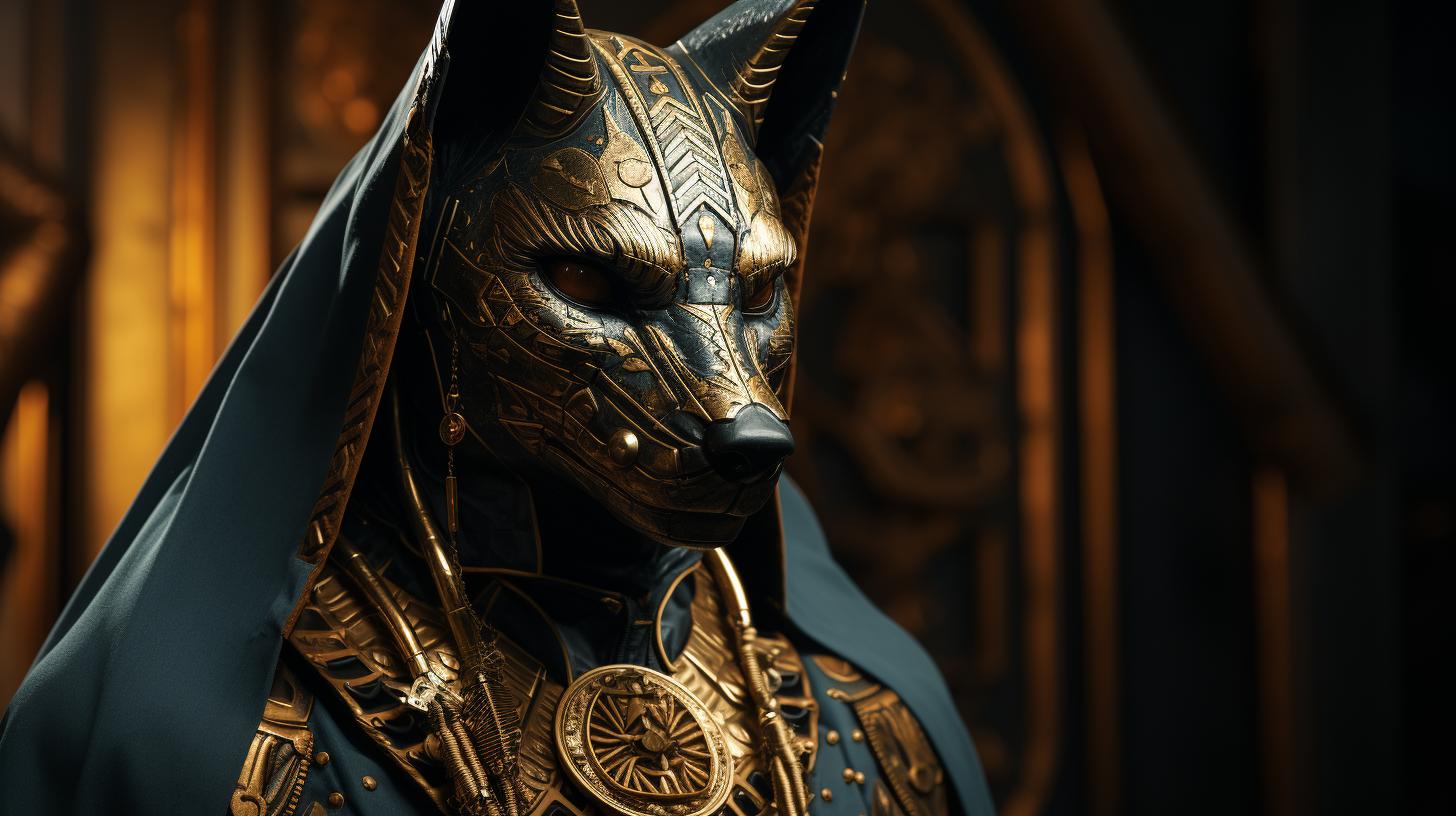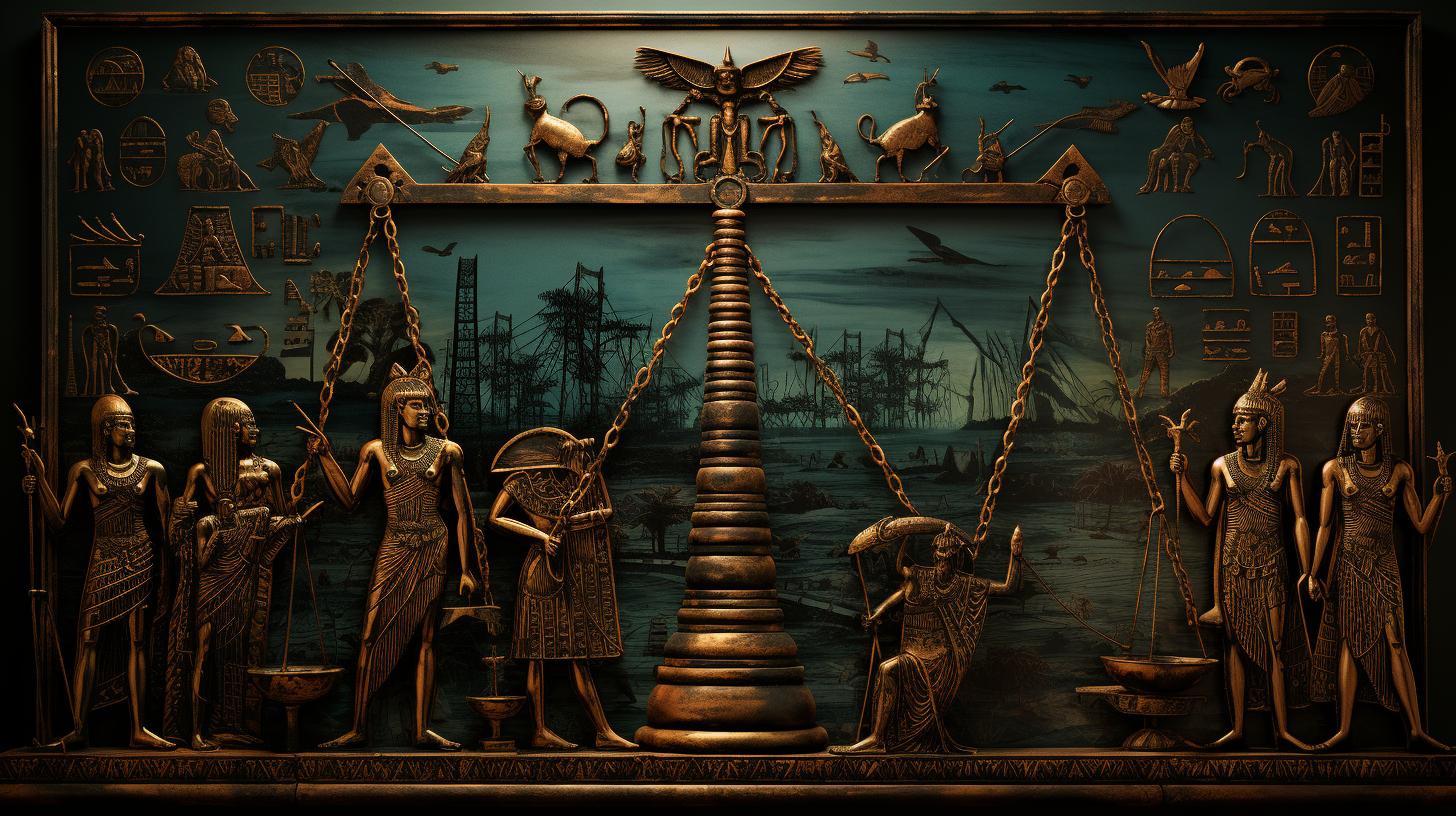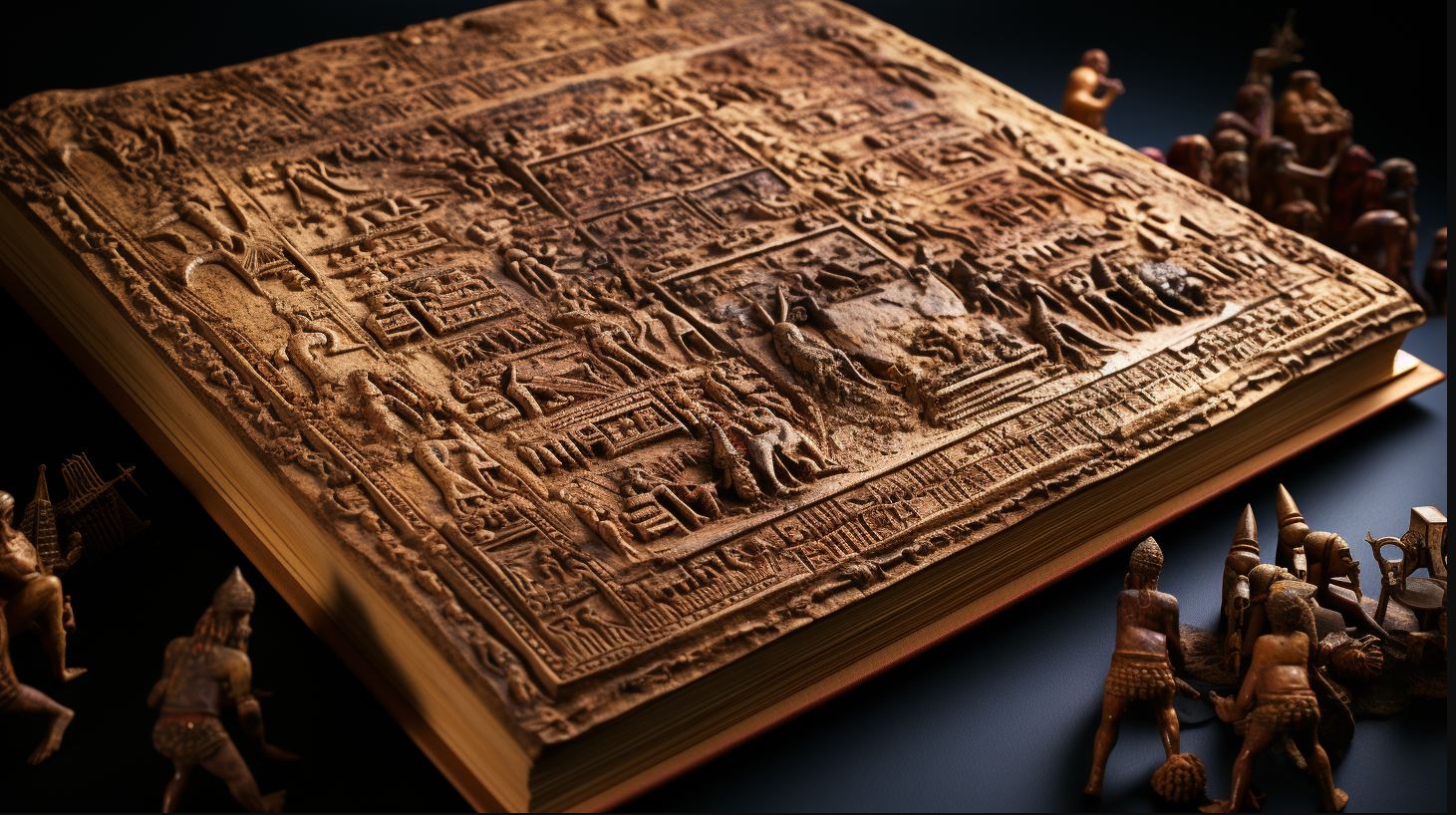Discover the Ancient Tale of Shu and Tefnut, the Egyptian Gods of Air and Moisture
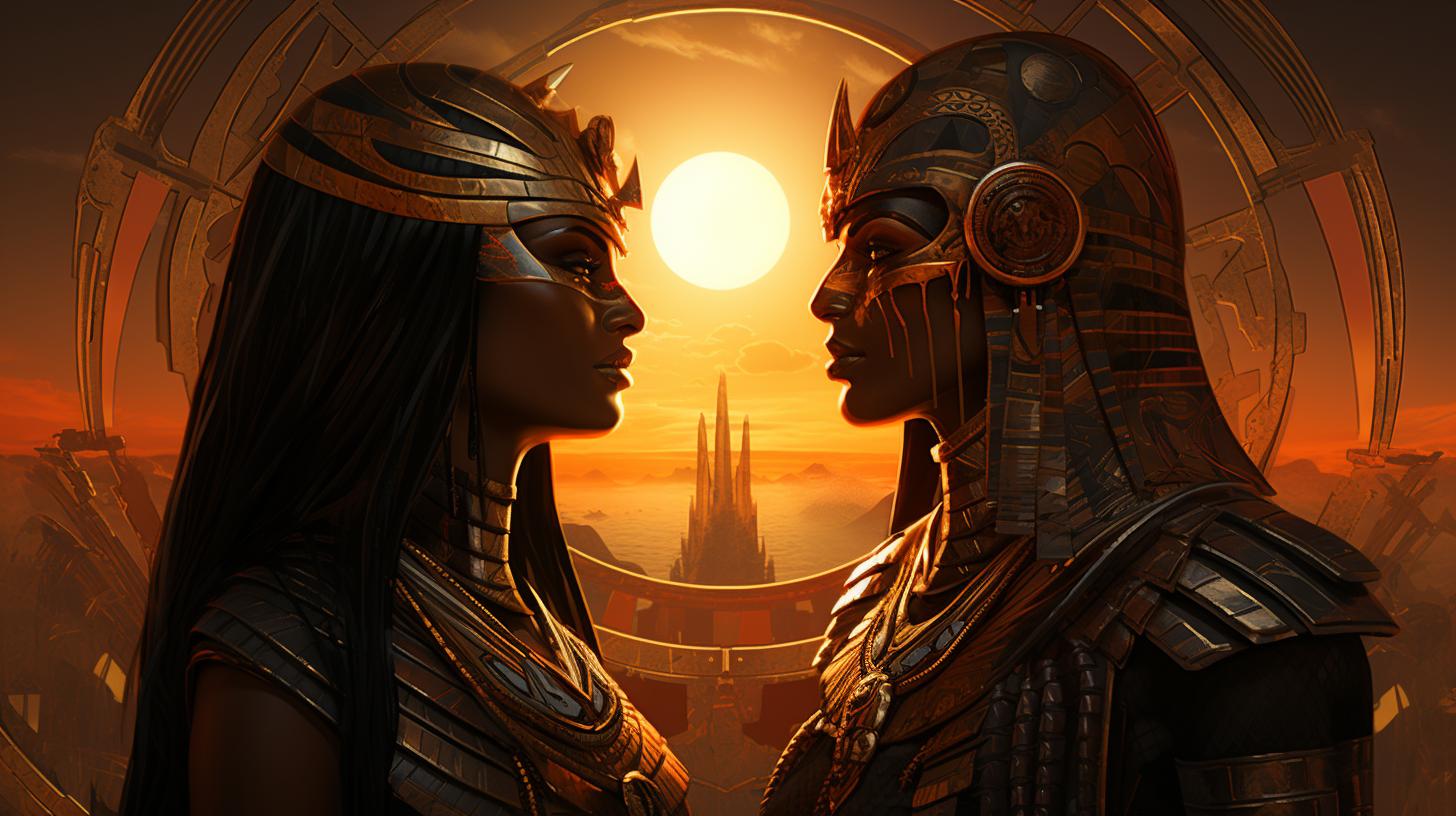
Shu and Tefnut are ancient Egyptian gods that represent the principles of air and moisture. According to myth, they were twin siblings and children of the sun god Ra.
Shu was responsible for lifting the sky and was associated with the Greek titan Atlas, while Tefnut was responsible for dew, rain, and mist, and was considered one of the gods in Memphis.
Shu and Tefnut also played a significant role in creation myths and ancient religious practices. In modern times, they continue to inspire and influence culture, education, and technology.
Shu and Tefnut
Shu and Tefnut are two of the most recognizable ancient Egyptian gods. They were born as twin siblings and were the children of the great sun god Ra.
They are famously known for being the gods of air and moisture.
They played significant roles in Egyptian mythology, religion, and art.
The Mythical Background of Shu and Tefnut
Shu and Tefnut were twin siblings and born to the sun god Ra, and his wife Nut. The two siblings are commonly depicted as twins, Shu being the older brother and Tefnut the younger sister.
According to myth, they were both created when Ra, at the beginning of time, brought himself into existence. Shu and Tefnut were born from his own tears. Their creation was a necessary part of the Egyptian creation story.
Twin Siblings and Children of Ra
As mentioned earlier, Shu and Tefnut were twin siblings. They were born from the tears of their father, Ra, who created them to fulfill his need for companionship. This companionship is seen by many as a reflection of the human need for companionship and indicates that even the gods themselves were not immune to loneliness.
The Gods of Air and Moisture
Shu and Tefnut were associated with two fundamental principles of existence: dry air and preservation, and moist air that provokes change and creates the concept of time. Shu was mostly known as the god of air and wind.
Alternatively, Tefnut was known as the goddess of moisture, rain, and dew. These two principles helped to shape the world as the ancient Egyptians knew it.
Mythical Images and Symbolism
Shu and Tefnut were represented in various forms, such as images, symbols, and texts. These representations contributed to the imagination and understanding of their roles in Egyptian mythology.
The Image of Shu
Shu was depicted as a god holding a scepter, with a headdress made of ostrich feathers, to signify power and majesty. He was also identified with the Greek titan Atlas, who lifted the sky and was responsible for air movement.
Shu helped shape the world by separating the sky from the earth, placing Nut (the sky goddess) on top of his extended arms.
The Image of Tefnut
Tefnut was depicted as a woman with the head of a lioness, symbolizing her association with fierce weather phenomena such as storms and rain. Her name translates to ‘moist’ or ‘she of moisture’, which describes her association with all phenomena related to moisture.
The Symbolism of Shu and Tefnut
- Shu and Tefnut were associated with the balance and harmony of the universe.
- They represented the principles of stability and change
- They were also depicted as symbols of the east and west
Shu and Tefnut in Ancient Egyptian Religion
Shu and Tefnut played a significant role in ancient Egyptian religion, with their origins rooted in creation mythology.
They were born as twin siblings and children of the sun god Ra, with Shu representing the god of air and Tefnut representing the god of moisture. Their connection to Ra made them an important part of Egyptian religious practices and beliefs.
Shu and Tefnut in Creation Myth
The creation myth tells the story of how Shu and Tefnut were tasked by Ra to create space between the heavens and the earth. They were to separate their children, the sky goddess Nut and the earth god Geb, who were said to be lovers.
Shu was given the responsibility of lifting up the sky, while Tefnut was responsible for the creation of moisture and water on earth.
This task proved to be difficult for Shu and Tefnut, as they found the separation of Nut and Geb emotionally challenging. Their separation created a void that ultimately led to the creation of the universe as we know it today.
The concept of time, as well as the four elements of earth, air, fire, and water, were all linked to Shu and Tefnut in Egyptian mythology.
The Role of Shu and Tefnut in Ancient Egyptian Religion
Shu and Tefnut were worshiped in ancient Egyptian religious practices, with their association with Ra making them significant figures in the Egyptian pantheon of gods. They were often depicted in art and sculptures, with Shu shown lifting the sky and Tefnut represented with the head of a lioness, symbolizing her connection to moisture and water.
Their significance in ancient Egyptian religion was not limited to worship and art, however. Shu and Tefnut were also politically significant, with pharaohs often using their images for propaganda purposes. They were seen as symbols of power, stability, and control, making them a valuable asset for those in positions of authority.
Worship of Shu and Tefnut
Shu and Tefnut were often worshipped in temples throughout ancient Egypt. They were believed to have the power to bring balance to the universe, and their worship was seen as a method of gaining favor with the gods.
Political Use of Shu and Tefnut
Pharaohs often utilized the imagery of Shu and Tefnut for political gain.
They were used to project strength and control over the people of Egypt, acting as emblems of the pharaoh’s authority and power.
The role of Shu and Tefnut in ancient Egyptian religion cannot be overstated.
Their connection to creation myths, their significance in religious practices, and their political usefulness made them an integral part of Egyptian culture and society.
Shu and Tefnut in Literature and Art
The gods Shu and Tefnut, two of the most important deities in Ancient Egyptian mythology, have left a profound legacy in literature and art. Their stories and images have been depicted in all forms of creative expression, from hieroglyphic texts and papyrus scrolls to temple walls and statues.
Shu and Tefnut in Ancient Egyptian Literature
Shu and Tefnut were featured in many of Ancient Egypt’s creation myths, where they played a crucial role in the separation of heaven and earth. These myths have been passed down through the ages in ancient texts, including the Coffin Texts and the Book of the Dead, as well as more recent discoveries such as the Temple of Philae’s inscriptions.
One of the more iconic literary references appears in the “Hymn to the Sun” from the reign of King Akhenaten. In this text, Shu is depicted as the foundation of the sky, while Tefnut is described as the “mistress of all the gods” and the “impeller of all life.”
Shu and Tefnut in Ancient Egyptian Art
In Ancient Egyptian art, Shu was often depicted with a one-sided headdress and ostrich feathers, while Tefnut was portrayed with the head of a lioness and an ankh symbol. These images could be found throughout the kingdom, from temple walls to tombs and palaces.
The images of Shu and Tefnut were also frequently seen intertwined with other deities, such as Nut and Geb, to represent concepts such as the union of heaven and earth, or the balance between light and darkness.
Shu and Tefnut were also commonly depicted in jewelry, including necklaces, bracelets, and amulets. These items were often worn by members of the royal family or nobility, demonstrating their reverence for the gods.
In conclusion, the artistic depictions of Shu and Tefnut are a testament to their enduring power and influence in Ancient Egyptian culture. Their images and stories have been celebrated by artists and writers for centuries and continue to inspire and captivate people throughout the world.
Shu and Tefnut in Modern Times
The Influence of Shu and Tefnut in Modern Culture
Shu and Tefnut continue to captivate modern audiences through various forms of media. They make appearances in films, documentaries, and TV shows, where they are featured in stories that showcase their mythical powers and duties.
Moreover, they are also a popular topic in literature, with many books centering around their ancient tales.
The Role of Shu and Tefnut in Education
Shu and Tefnut are not just limited to the realm of entertainment. They also play a significant role in education. Schools often teach students about the gods as part of their history and social studies curriculum.
There are also online resources that offer students a chance to learn about Shu and Tefnut in an interactive way. One such source is the NEW Britannica Kids website, which has many features that make learning about the ancients gods both fun and informative.
Recreation, Technology, and Shu and Tefnut
Apart from their influence in education and culture, Shu and Tefnut also make appearances in other facets of modern life. For example, the gods appear in various sports and recreation activities, such as kart racing, video games, and board games.
They even have connections to technology, with some video games featuring the gods as characters.
Shu and Tefnut in Sports and Recreation
The gods are a popular theme in sports and recreation, with many products featuring their images and symbolism. For example, kart racing enthusiasts may recognize the names ‘Shu’ and ‘Tefnut’ as characters from the video game ‘ModNation Racers’.
The Connection between Technology and Shu and Tefnut
Shu and Tefnut have connections to various technologies that span from traditional media to modern-day video games. For example, the gods make appearances in board games such as ‘Senet’, as well as modern video games like ‘Assassin’s Creed: Origins’.
Additionally, there are many mobile apps available that offer users a chance to learn about the gods and their stories. In conclusion, Shu and Tefnut are more than just mythological figures from ancient Egypt.
Their influence can still be felt in modern times, from education and culture to sports and technology. They continue to inspire and captivate audiences of all ages, making them an enduring part of human history and imagination.












